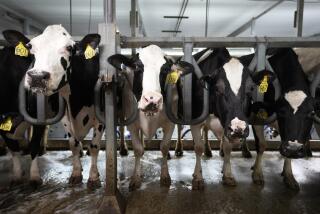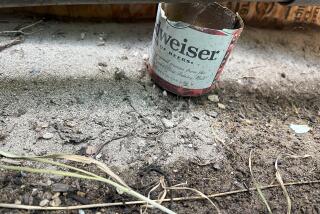Pesticide blamed for bee deaths now linked to bird declines
A class of pesticides linked to the catastrophic collapse of bee colonies has now been linked to declines in bird populations, according to a Dutch study.
The researchers found a strong correlation between pesticide concentrations measured in surface freshwater and lower or negative local population growth rates of 14 species of birds since the introduction of the pesticide imidacloprid in the Netherlands in the 1990s, according to a study published online Wednesday in the journal Nature.
The chemical belongs to the neonicotinoid family of pesticides, which have been associated with the sudden collapse of colonies of domesticated honeybees, used to pollinate food crops worldwide.
“It’s a correlation, so we must be careful -- we can’t say it’s a cause,” said study coauthor Ruud Foppen, an ornithologist and population ecologist at Sovon, Dutch Center for Field Ornithology. “I think we can say these correlations are very convincing and point to an effect that’s been backed by other studies.”
Although direct ingestion of the pesticide from seeds of sprayed plants cannot be ruled out, the researchers believe a decline in the insects available to birds during mating season is the most likely factor in the changes in population growth. Several studies in laboratories and fields have suggested the pesticides can affect the population of non-targeted insects on land and water. Nine of the 15 species in the study exclusively eat insects, and all 15 of them feed insects to their offspring, according to the study.
Researchers used two long-term environmental monitoring databases -- one measures surface water quality, and the other is a census of local passerine bird populations, including five species of warbler, as well as skylarks, starlings, thrush, swallows, sparrows, pipits, yellowhammers, wagtails, stonechats and whitethroats.
Where neonicotinoid levels were highest, populations declined by 3.5%, the study found.
The study also considered changes in land use, the leading culprit behind declining bird populations throughout Europe. When it came to local population trends, however, changes in land use such as more intensive agricultural practices and a surge in greenhouses and bulb cultivation did not correlate as strongly with the population trends as did the pesticide levels, the study found.
“The most likely candidate to explain these kinds of local differences is not large-scale land use, but neonicotinoids in the water,” said Foppen.
Interested in the birds and bees? Follow me on Twitter: @LATsciguy







